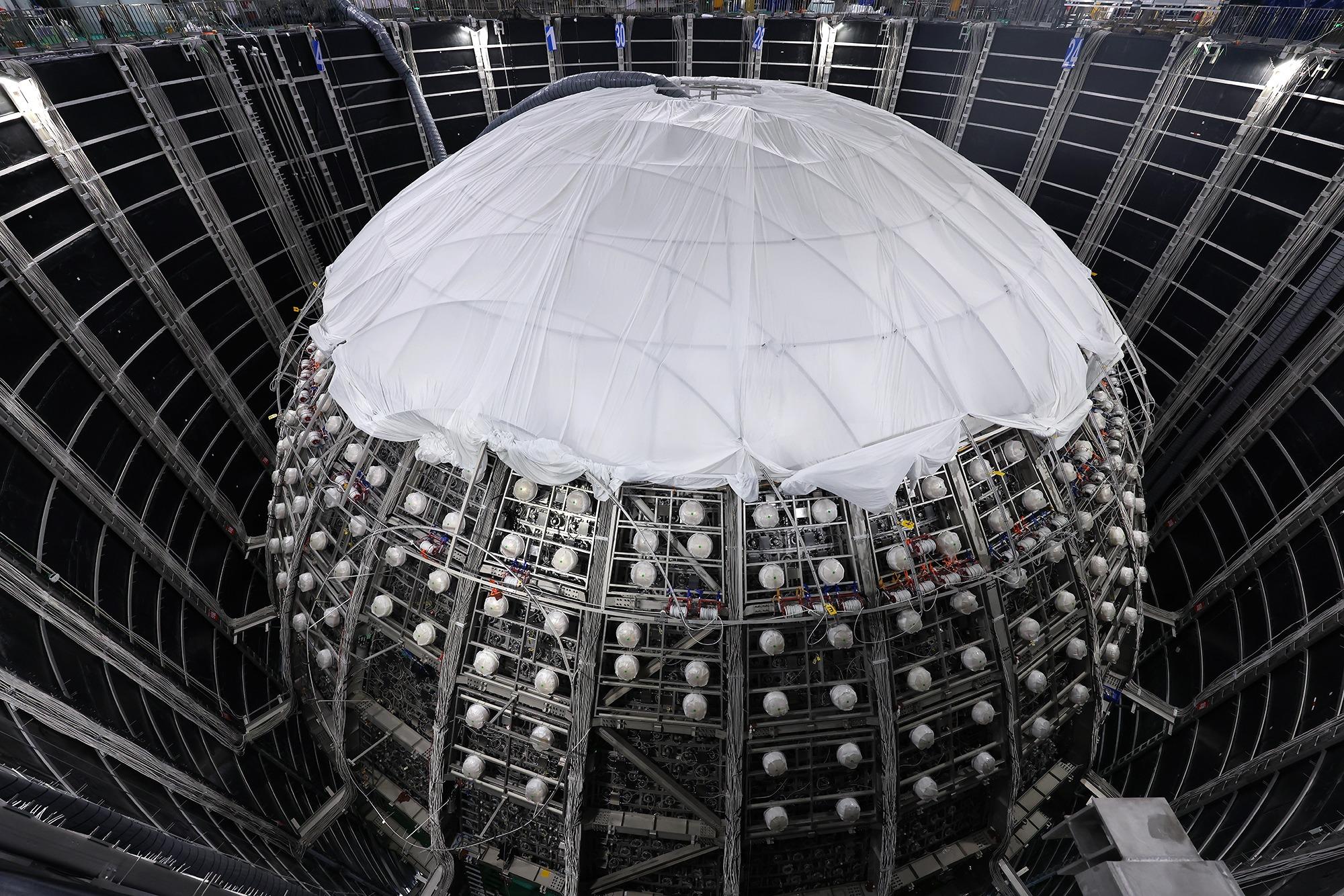 The detector of the neutrino observatory is currently under construction. (PARKER ZHENG / CHINA DAILY)
The detector of the neutrino observatory is currently under construction. (PARKER ZHENG / CHINA DAILY)
Seven hundred meters beneath a hill in the rural expanses of the Kaiping area in Jiangmen lies China’s largest underground laboratory — the Jiangmen Underground Neutrino Observatory. This extraordinary facility is at the forefront of probing the mysteries of the universe’s origins.
Our journey to this hidden scientific sanctuary began with a 15-minute ride in a dimly lit cable car, along a 1,266-meter-long sloping tunnel. The temperature in the subterranean space was surprisingly warmer than expected, with the rocky walls reaching up to 31 degrees Celsius, and the air was heavy with a stifling, damp heat.
 A sloping cable route leading to the Jiangmen Underground Neutrino Observatory is seen in October. The observatory is located 700 meters below ground. (PARKER ZHENG / CHINA DAILY)
A sloping cable route leading to the Jiangmen Underground Neutrino Observatory is seen in October. The observatory is located 700 meters below ground. (PARKER ZHENG / CHINA DAILY)
Donning protective clothing and helmets, and after a gusty shower infused with disinfectant in the airlock, we waited in anticipation. As the grand doors to the main laboratory gradually opened, a colossal steel-framed sphere came into sight. It was assembled with numerous components attached with super-acute detectors to catch and analyze neutrinos, which are tiny, near-massless particles that travel at near the speed of light.
Heng Yuekun, deputy manager of the Jiangmen Underground Neutrino Observatory, says that once the construction of the gigantic underground sphere is completed, it will be submerged in the heart of a 44-meter-deep pool filled with ultra-pure water, which can be used to shield interfering signals and veto the background cosmic rays.
The components of the behemoth include a stainless-steel shell spanning 41 meters in diameter, an acrylic sphere measuring 35.4 meters in diameter, 20,000 metric tons of liquid scintillator, and 20,000 20-inch and 25,600 3-inch photomultiplier tubes, he says.
Seventy-four global research institutions from 17 countries and regions are participating in this neutrino experiment, contributing to its hardware, software and physical analysis. On completion, these institutions will gain access to the data for their research, says Heng, who is also a professor at the Institute of High Energy Physics, the Chinese Academy of Sciences.
Construction of the laboratory began in early 2015 and has been underway for nearly a decade. It will go into service at the end of next year.


